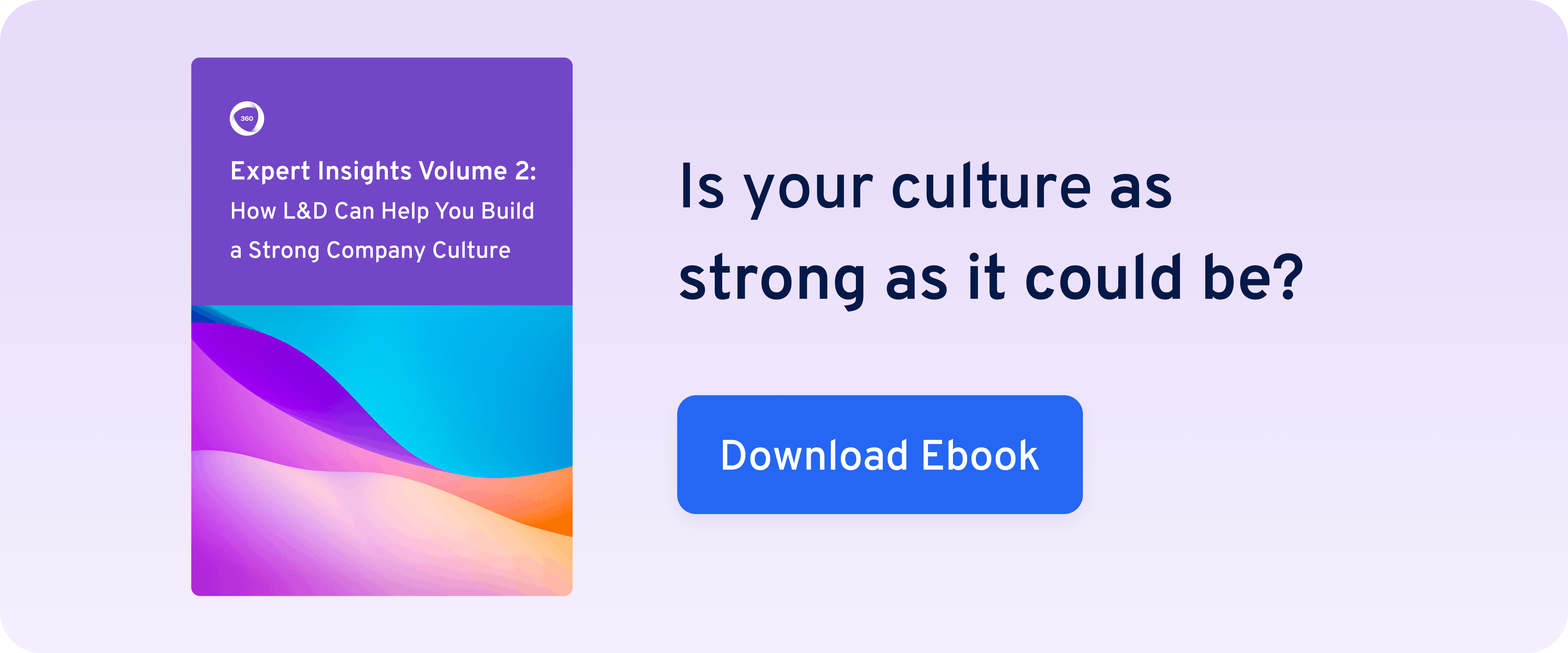
Diversity in Learning: 10 Tips for Building an Inclusive L&D Culture from Visa, Qualtrics, WEX, and More
How we learn tells us a lot about who we are. Now, with organizations everywhere making greater efforts to build diverse, equitable, and inclusive environments where everyone feels valued, it’s time for L&D teams to examine how their learning culture supports these goals.
In this CLO Connect roundup post, we’ve collected 10 fantastic tips for building an inclusive L&D culture and supporting diversity goals through learning. From making room for honest conversations to recognizing the power of names, we’re here to share some practical DE&I tips from market-leading companies.
Let’s get started with a word of advice from Kelli Dunaway of Bryan Cave on how to nurture the next generation of leaders with great learning experiences.
Loving what you’re reading? Come and join the L&D Collective for more great learning insights, resources, and events!
#1. Bryan Cave: Nurture the next generation of leaders with great L&D
For Kelli Dunaway, Director of L&D at law firm Bryan Cave Leighton Paisner, L&D plays a crucial role in nurturing the next generation of leaders.
“Right now, our L&D team is partnering with our inclusion and diversity teams on our leader sponsorship program. This is really special, and really powerful.”
“This is a 12-month program in which we pair high-performing lawyers of color, LGBTQ lawyers, and women lawyers with some powerful rainmakers within the firm. We then host monthly training sessions and help them to build the business case for why they should make partner.”
“We’ve had some great results through this program, and it’s been a real game-changer.”
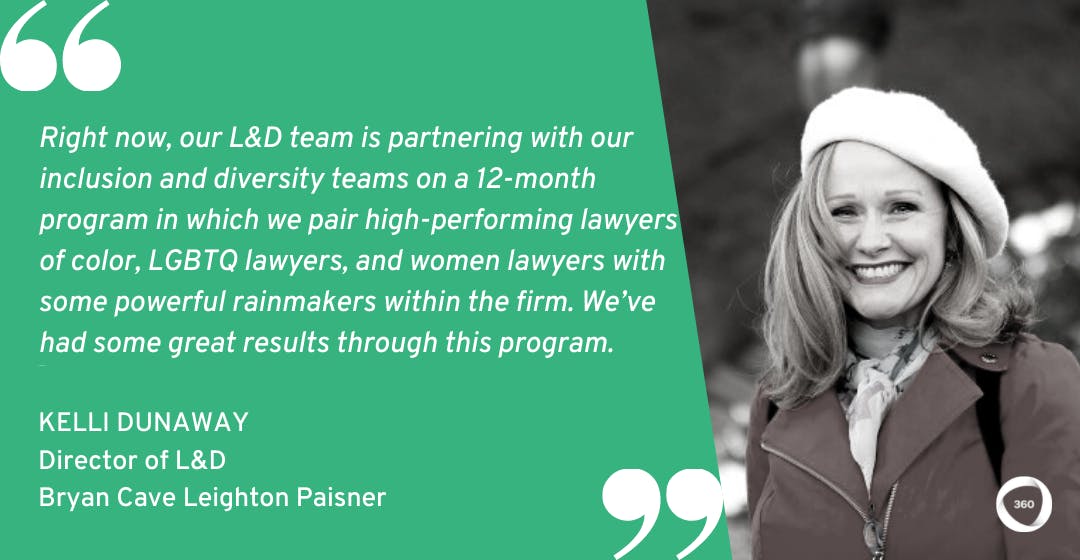
You can never have enough expert insights! Check out our ebook to find out How L&D Can Help You Build a Strong Company Culture
#2. Visa: Make diversity commitments real for each team
Some teams have a hard time understanding exactly how company DE&I goals relate to their work. That’s why Gaurav Maheshwari, Senior Director of Content and Knowledge Management at Visa University, is so focused on making these commitments real.
“Inclusion and diversity is extremely important for the workplace, and all leaders need to recognize that and have a roadmap for what they want to achieve. There’s a greater need for education and awareness in this space.”
“That’s why it’s important to contextualize these commitments for specific teams, and to showcase the behaviors we want to promote to build a culture of inclusion and diversity. L&D teams have a critical role to play in this process.”
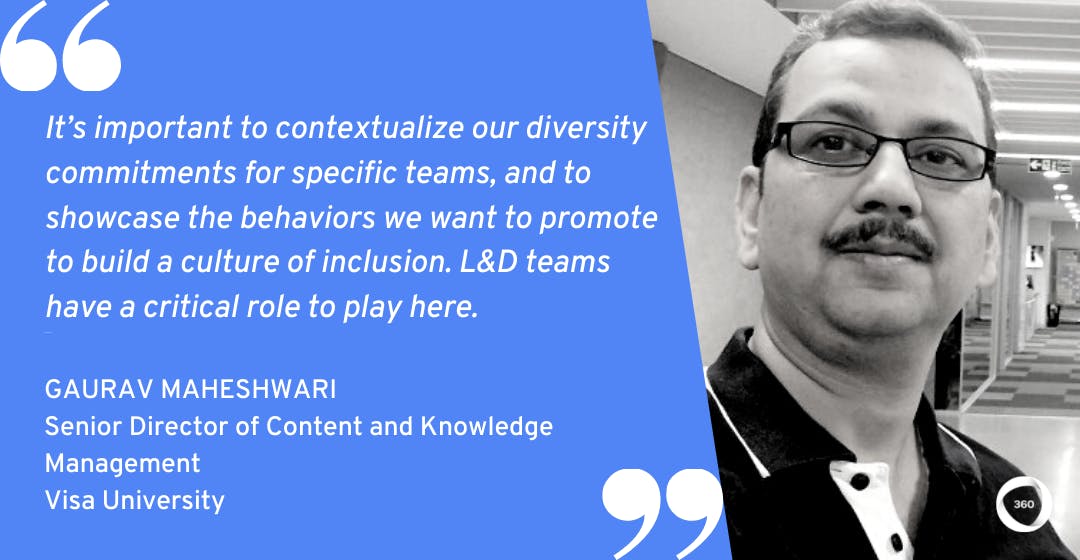
One other technique supporting L&D diversity? Harnessing the power of collective storytelling.
#3. Toppers Pizza: Harness the power of collective storytelling
Joe Dunlap, Director of L&D at Toppers Pizza, has a clear and distinctive strategy for supporting diversity goals through L&D: tell great stories together.
“Our diversity and inclusion strategy is about engaging our entire workforce to share their stories. When people hear about the struggles or challenges one of their peers is going through, based on their race, their age, whatever this may be, that’s a personal experience for them.”
“We’re encouraging people to share their stories so that we can all grow as an organization. This seems to resonate more with people, because they can see that they’re working with people who have been through a real variety of experiences.”
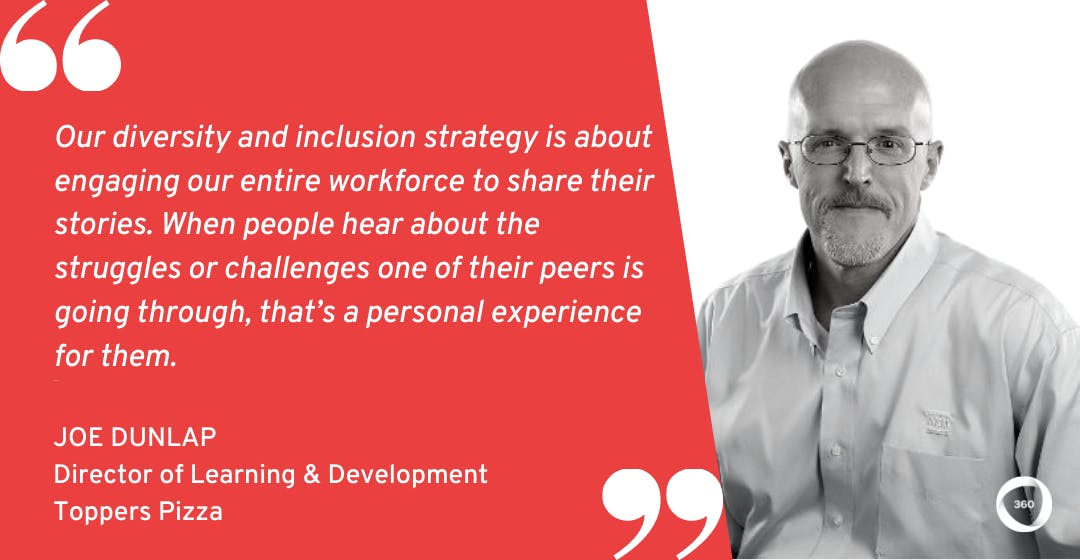
This focus on sharing stories is a big part of our own DE&I commitments at 360Learning–especially when it comes to celebrating occasions like Women’s History Month.
#4. ASPS: Don’t shy away from uncomfortable discussions
Let’s be honest: some DE&I discussions can make people a little uncomfortable. But for Cassandra Lux, Director of Education at ASPS, L&D teams have a key role to play in facilitating important discussions–even when things get a little awkward.
“Internally at ASPS, we have our Diversity, Equity, and Inclusion taskforce, which is focused on honest dialog and conversation. With our podcast series, we’ve also released a season on diversity and inclusion, including an episode focusing on how to be an ally in the workplace.”
“We heard from our leaders about their career experiences, which involved some raw and frank discussions. These aren’t always comfortable discussions to have, but they’re crucial. We want to continue our efforts to focus on this area, because it’s something I’m really proud of.”

#5. WEX: Recognize the power of names
Reflecting your DE&I commitments in your learning materials means re-examining your basic assumptions. For Jess Almlie, Vice President of Learning Experience at WEX (Benefits Division), this means recognizing the power of names.
“It’s everyone’s responsibility to reflect our commitment to DE&I goals in some shape or form. So, we’ve tried to have regular conversations within our team about what that looks like, especially in our learning resources.”
“One specific example is, when we are creating external or internal training, and we’re telling stories involving people, we’re making sure the names we use are names that could be used in different parts of the world, not just names that come traditionally from our upper Midwestern United States roots. That’s been a shift for some of our folks.”
“It’s a little thing, but it helps us to open our eyes a little bit more.”
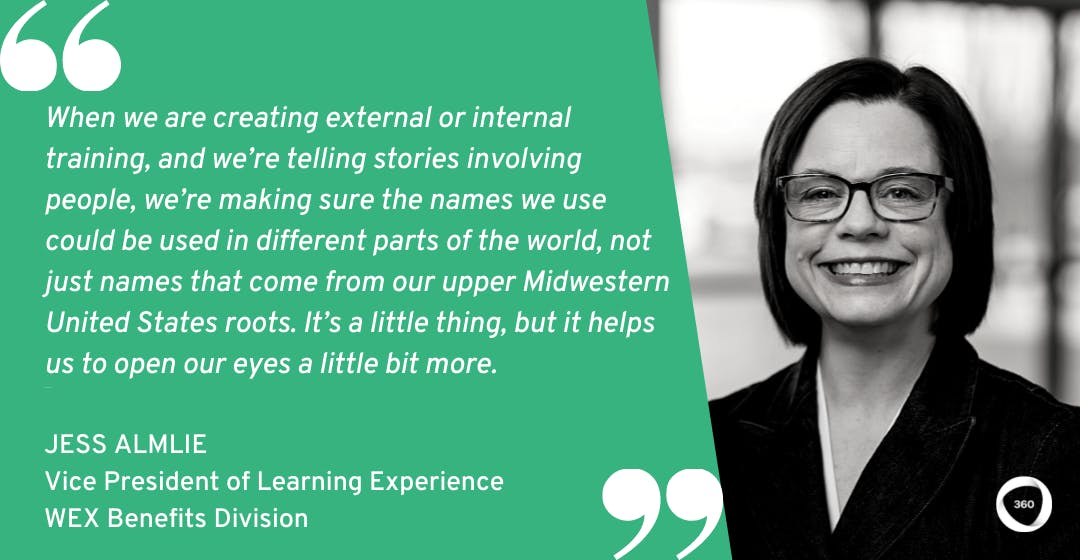
And speaking of paying attention to the smaller details...
#6. ServiceNow: Reflect your diversity in the smaller details
For Alyssa Clark, Director of Learning Strategy & Design at ServiceNow, it’s crucial to reflect diversity commitments in every single part of your training material. That means interrogating all of the assumptions—big or small—that sit behind your content.
“We noticed in our storyboard reviews a few weeks ago with marketing that we were always using male avatar characters as the teacher, the educator, or the sharer of knowledge, with the female character being the recipient of that knowledge.”
“It was so modern and current and important that two men on our team were the ones who noticed this and said something. Since then, we’ve made some subtle changes that really affect the power dynamics we’re representing.”
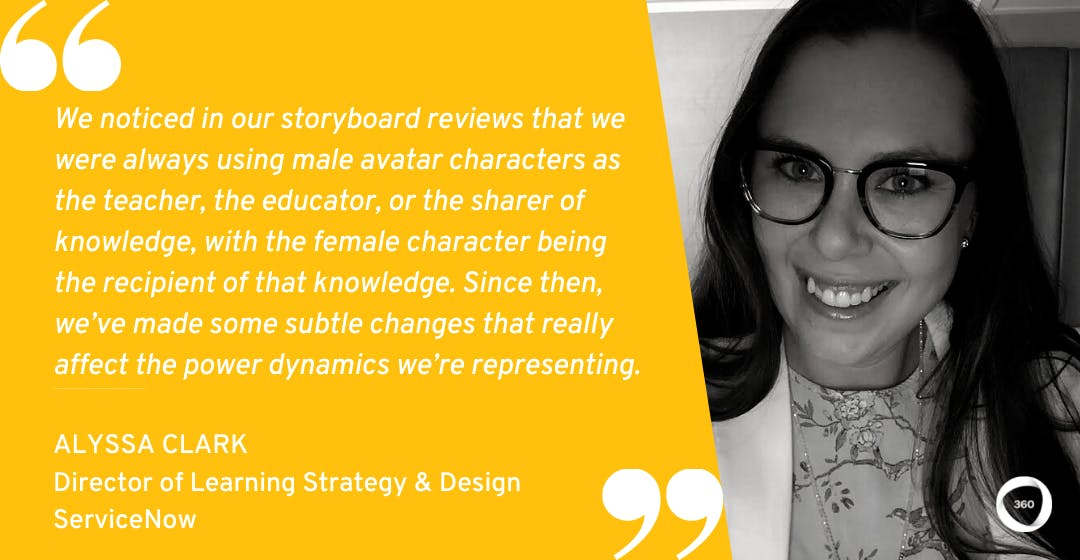
“This is the sort of thinking that is alive and well within ServiceNow. We’re really making sure we think about intentionality when we’re crafting those messages.”
Related: How to Develop Anti-Bias and Diversity Training That’s Truly Effective
#7. Constellation Brands: Capture expertise from a wider group
Every organization has a natural wealth of talent that can be leveraged to support DE&I goals through learning. For Maggie Romanovich, Director of Learning & Development (National Accounts) at Constellation Brands, it’s critical to actively seek out this expertise.
“From an L&D perspective, there are four things I’m focusing on to reflect our DE&I commitments within our L&D. We need to make our learning: 1) sustainable, 2) relevant to our learners, 3) actionable, and 4) inclusive.”
“We need to reflect expertise from people who don’t look like me, and who might not come from the same place that I do. For example, I support our sales team, but my learning efforts should also involve marketing, finance, legal, and anyone else with a direct interest.”
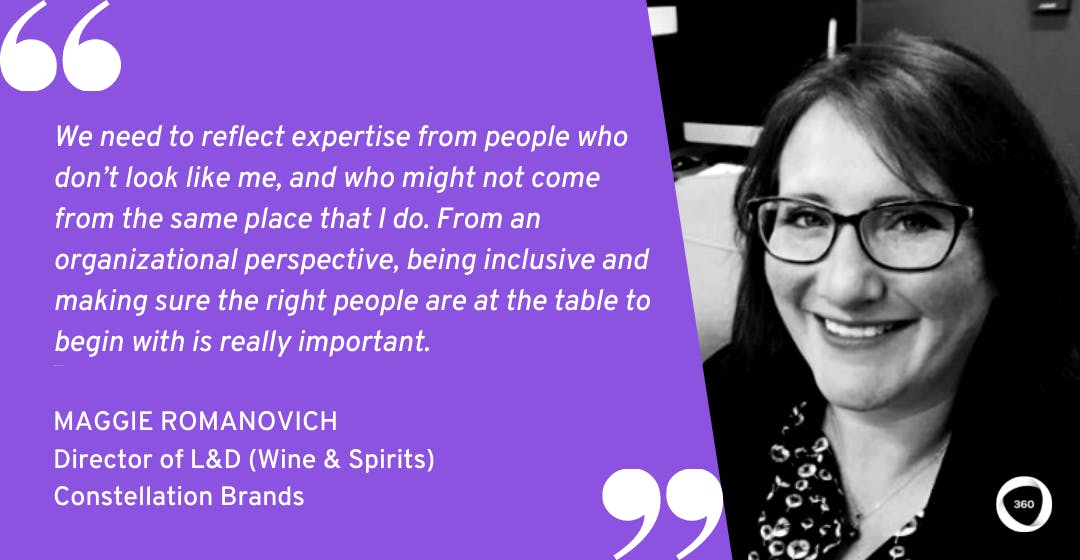
“From an organizational perspective, being inclusive and making sure the right people are at the table to begin with is really important.”
#8. Code Nation: Show your commitment at the leadership level
As Ta Lynn Mitchell, Director of Programs at Code Nation explains, organizations can’t get anywhere with their DE&I goals without reflecting their commitment at the leadership level—and that goes for learning programs, too.
“Like every organization, we’ve had some honest, difficult, and critical conversations over this past year. Out of these conversations, we’ve created a DE&I leadership team comprised of folks from all different levels of the organization, and across different regions.”
“It’s important for any organization to have that conversation, specifically as it pertains to L&D. Is it possible that our curriculum is part of that problem? Can it play a role in supporting DE&I?”
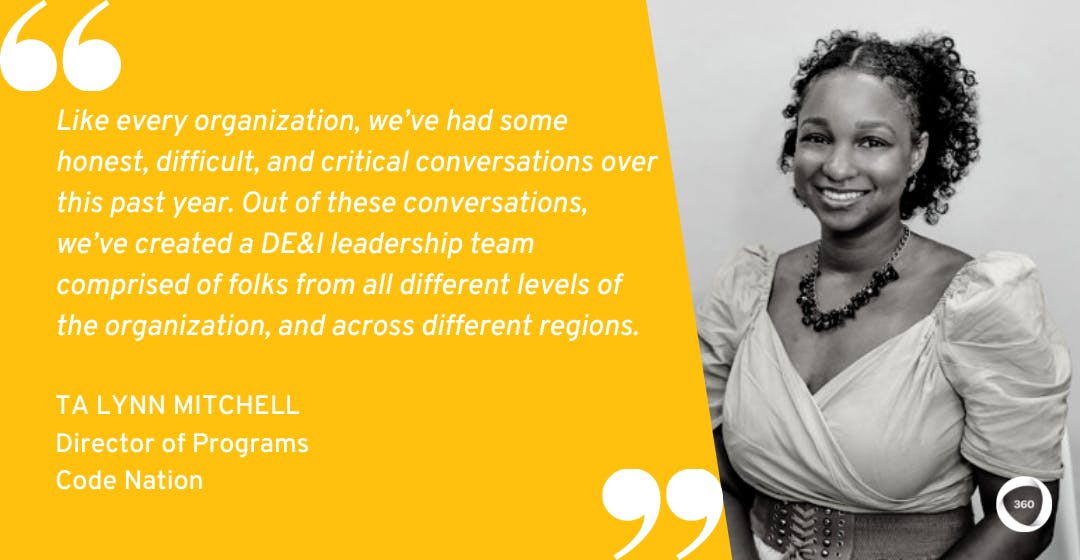
On top of these leadership commitments, it’s also crucial to help learners consider DE&I goals at a personal level.
#9. Qualtrics: Help learners to consider DE&I goals at a personal level
One of the best ways to make progress with DE&I goals is to help learners to see how they identify with these goals. That’s why Areebah Ajani, Senior Learning Experience Designer at Qualtrics, is so focused on helping people make these connections.
“Besides our diversity and inclusion training being rolled out by our People Ops team and our new Head of Diversity and Inclusion, I’m also moderating some ongoing discussion groups on diversity topics, including ableism, race, and representation at work.”
“I love this, because it’s somewhere we can look at what’s happening in the news, look at what scholars have to say on the topic, and discuss what it means for our lives personally and professionally. That’s one way the learning team has taken an opportunity to offer this to the rest of the business, and helped people make their own personal connections.”
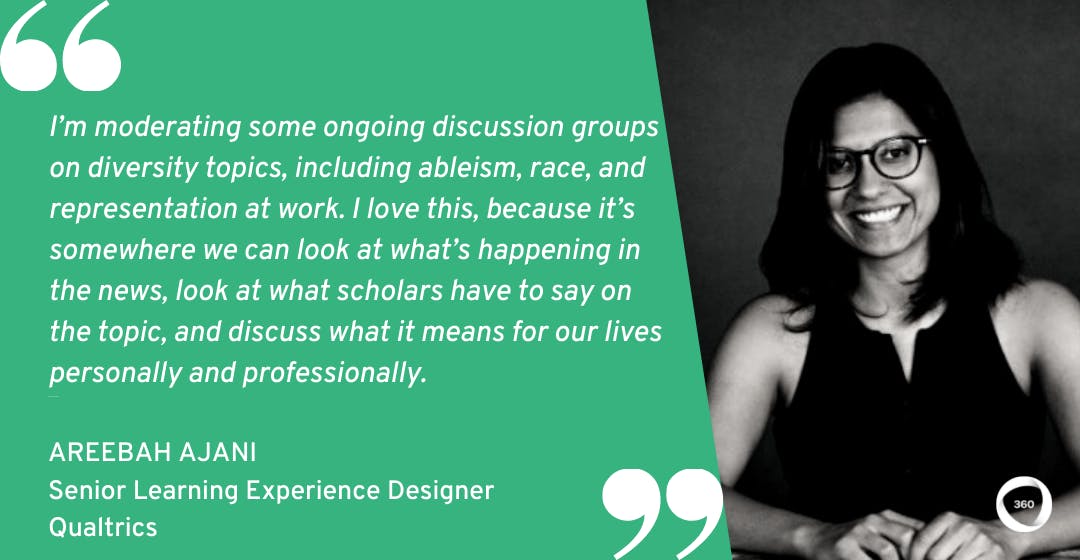
#10. Klaviyo: Localize your DE&I training content
To finish up our list, here’s one more great expert tip from Natalie Higgins, New Hire Enablement Specialist at Klaviyo: always localize your DE&I training content.
“We had some harassment training that seemed to work really well for our employees in the United States, but there were some pieces of content that weren’t communicating quite correctly for people in the United Kingdom. We had to find ways to deliver this training across the board, or find resources that would suit people in specific locations.”
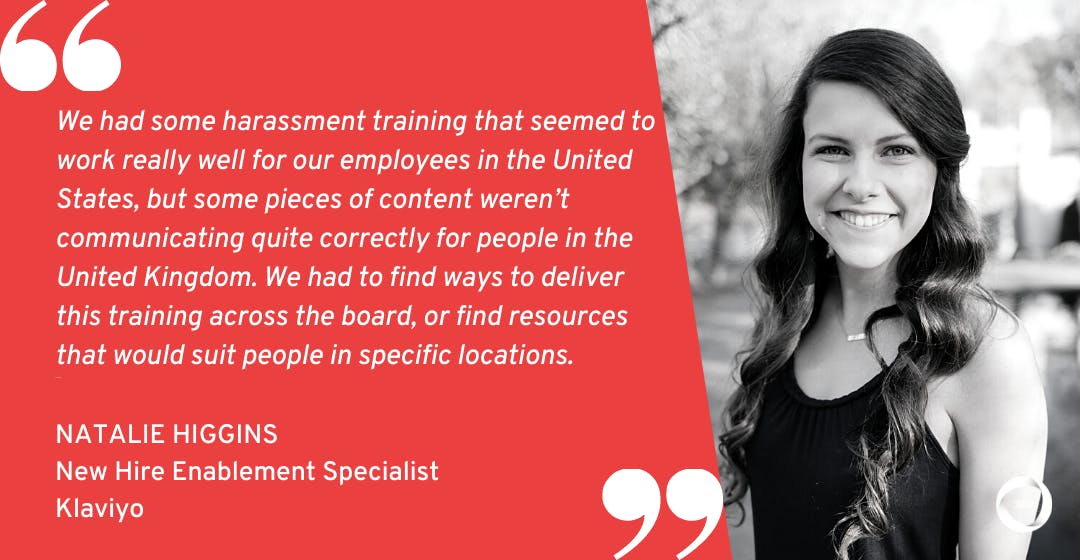
“We want to make sure we have all the appropriate people in the room to have all the right perspectives to create the answers and solutions for our customers. It’s crucial to reflect this commitment to DE&I within our L&D materials, especially within our training content.”
These 10 tips can help you build a diverse L&D culture
L&D teams have an increasingly important role to play when it comes to supporting organizational DE&I goals—especially through building an inclusive learning culture. We hope these 10 expert tips have given you the guidance and inspiration you need to build the L&D culture your teams need and deserve.
Thanks again to our 10 experts for so generously sharing their knowledge and insights with us!
If you’re looking for more great L&D tips and stories, check out our interviews with Ruby Dhaliwal of Castlight Health on building ‘leadership stamina’, and with Caroline Ford of AstraZeneca on her 4-step framework to build new digital capabilities.
Want more peer insights on transforming workplace learning? Sign up to become a member of the L&D Collective, and check out our other #CLOConnect interviews with top L&D leaders on driving growth and scaling culture through Collaborative Learning. Or you can subscribe (below 👇) to our weekly newsletter to receive our latest posts directly in your inbox.

